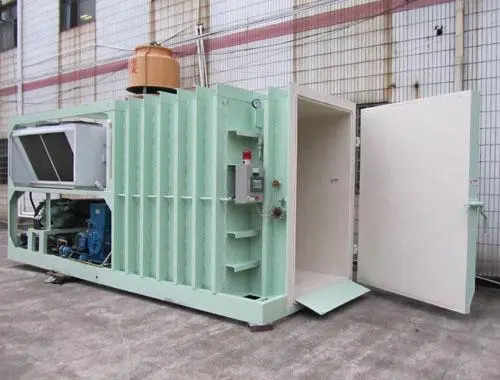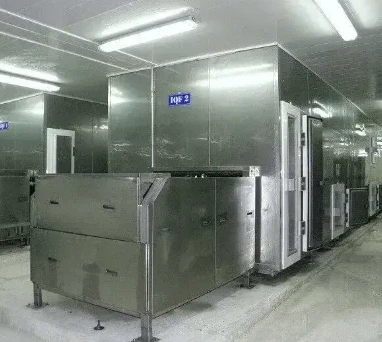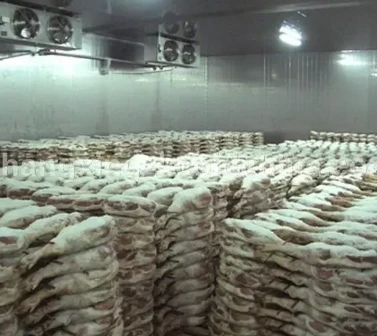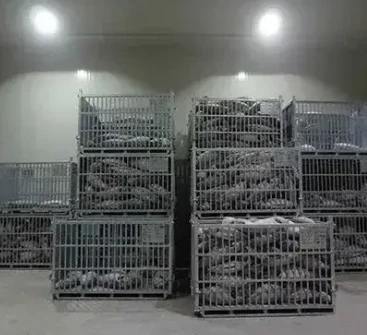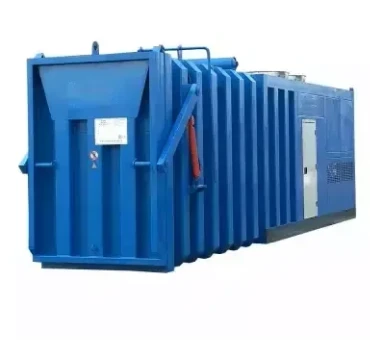The science of freezing foods Vacuum Freezer
Freezing is a quick and convenient way to preserve fruits and vegetables at home. You can produce frozen fruits and vegetables of high quality and maximum nutritional value if done correctly. Our directions are based on:
- The chemical and physical reactions that take place during the freezing process.
- The effect of freezing on the tissues of fruits and vegetables.
- Food microbiology.
Chemical changes during freezing
Fresh fruits and vegetables, when harvested, continue to undergo chemical changes that can cause spoilage and deterioration of the product. This is why these products should be frozen as soon after harvest as possible and at their peak degree of ripeness.
Fresh produce contains chemical compounds called enzymes, which cause the loss of color, loss of nutrients, flavor changes, and color changes in frozen fruits and vegetables. These enzymes must be inactivated to prevent such reactions from taking place.
Blanch vegetables to deactivate enzymes
- Enzymes in vegetables are deactivated by the blanching process.
- Blanching is the exposure of the vegetables to boiling water or steam for a brief period of time.
- Then the vegetables must be rapidly cooled in ice water to prevent them from cooking.
- In most cases, blanching is absolutely essential for producing quality frozen vegetables.
- Blanching also helps destroy microorganisms on the surface of vegetables and makes some vegetables, such as broccoli and spinach, more compact.
Add ascorbic acid to fruit to control enzymes
- The major problem associated with enzymes in fruits is browning and loss of vitamin C.
- Because fruits are usually served raw, they're not blanched like vegetables.
- Enzymes in frozen fruit are controlled by using chemical compounds that interfere with deteriorative chemical reactions.
- The most common control chemical is ascorbic acid (vitamin C). Ascorbic acid may be used in its pure form or in commercial mixtures with sugars.
- Soaking the fruit in dilute vinegar solutions or coating the fruit with sugar and lemon juice doesn't prevent browning as effectively as treatment with ascorbic acid.
Limit air during freezing
Air exposure can cause frozen products to develop rancid oxidative flavors. Keep frozen food in airtight containers or use wrapping material that does not permit air to pass into the product. Also, remove as much air as possible from the freezer bag or container to reduce the amount of air in contact with the product.
Changes in texture during freezing
Water makes up over 90 percent of the weight of most fruits and vegetables. Water and other chemicals are held within the fairly rigid cell walls that give structure and texture to the fruit or vegetable. When you freeze fruits and vegetables you actually are freezing the water in the plant cells.
When the water freezes, it expands and the ice crystals cause the cell walls to rupture. So the texture of thawed produce is much softer than when it was raw. This is particularly true of food that is usually eaten raw. For example, when a frozen tomato is thawed, it becomes mushy and watery.
Celery and lettuce are not usually frozen because of this and we suggest that you serve frozen fruits before they have completely thawed. Partially thawed fruit is more appetizing when the effect of freezing on the fruit tissue is less noticeable.
Textural changes due to freezing are not as apparent in products that are cooked before eating because cooking also softens cell walls. These changes are also less noticeable in high starch vegetables, such as peas, corn and lima beans.
Freeze food as quickly as possible
- Avoid mushy fruits and vegetables by freezing produce as quickly as possible.
- In rapid freezing, a large number of small ice crystals are formed. Small ice crystals produce less cell wall rupture than slow freezing, which produces only a few large ice crystals.
- Some home freezer manuals recommend that you set the freezer temperature at the coldest setting several hours before placing foods in the freezer.
- Check your freezer manual to see if it shows the location of the coldest shelves in the freezer. You should place unfrozen products on these shelves.
Don't overload the freezer
All freezer manuals give guidelines for the maximum number of cubic feet of unfrozen food that can be frozen at one time. This is usually 2 to 3 pounds of vegetables to each cubic foot of freezer space per 24 hours. Overloading the freezer with unfrozen products will result in a long, slow freeze and a poor-quality product.
Changes caused by fluctuating temperature
Fluctuating temperatures in the freezer can cause water vapor to form on the surface of the container. This is sometimes found in commercially frozen foods that have been improperly handled.
Store frozen fruits and vegetables at 0 degrees F or lower
To maintain top quality, frozen fruits and vegetables should be stored at zero F or lower. A freezer thermometer can help you determine the actual temperature of your freezer. If your freezer has a number of temperature settings, such as from 1 to 9, check the manual to see what settings are recommended for different uses.
Storing frozen foods at temperatures higher than zero F can shorten the shelf life of frozen foods. Don't attempt to save energy in your home by raising the temperature of frozen food storage above zero F.
Freezer burn
- Moisture loss, or ice crystals evaporating from the surface area of a product, produces freezer burn — grainy, brownish spots where the tissues become dry and tough.
- These areas often develop unpleasant flavors.
- Packaging designed specifically for freezing foods will prevent freezer burn.
Effects of microbes in the freezer
- Freezing doesn't destroy the microorganisms that may be present on fruits and vegetables.
- While blanching destroys some microorganisms and many die during freezer storage, sufficient numbers are still present to spoil the product when it thaws.
- Carefully inspect any frozen products that have accidentally thawed by the freezer going off or the freezer door being left open.
Nutrient value of frozen foods
Freezing, when properly done, can preserve more nutrients than other methods of food preservation. To maintain top nutritional quality in frozen fruits and vegetables it is essential to follow directions for pretreatment of the vegetables, to store the frozen product at zero degrees F and to use it within suggested storage times.
Freezing food: questions and answers
Q: What are the benefits and risks of vacuum packing foods for storage?
A: Vacuum packaging machines or vacuum sealers remove air and can extend the storage time of refrigerated, dried and frozen foods. Vacuum packaging is not a substitute for the heat processing of home-canned foods or for refrigerator or freezer storage. Vacuum packaging removes air from the contents of a package. In this oxygen-free environment, the spoilage bacteria don't multiply very fast, which helps maintain the quality of the food product.
Vacuum Cooler for Vegetables
Some dangerous bacteria, like Clostridium botulinum that causes deadly botulism poisoning, only grow in oxygen-free environments and without the competition of the spoilage bacteria can grow even faster. Unlike spoilage bacteria, disease-causing bacteria don't change the color or appearance of the food.
Keep vacuum-packaged perishable foods in the refrigerator or freezer. Be careful not to contaminate food during the vacuum packaging process—extremely clean hands, and clean and sanitized equipment and work surfaces are essential. Thawing food in the refrigerator is also critical.
Q: How can I avoid freezer burn?
A: Drying occurs on the surface of a frozen product that wasn't wrapped properly. The food is safe to eat but the quality is poor. To prevent freezer burn, remove all air and seal airtight.
Q: How much food can be frozen at one time?
A: Freeze only the amount that will freeze within 24 hours, which is usually 2-3 pounds of food per cubic foot of freezer space. For best quality set the freezer temperature at minus 10 degrees F at least 24 hours ahead of freezing quantities of fresh food. Once frozen, maintain a temperature at zero degrees F or less. Use an appliance thermometer to check the temperature of your freezer.
Q: Will food spoil if it stays frozen longer than the recommended storage time?
A: No. This is a quality versus a food safety issue. Recommended storage times ensure maximum quality. Food stored longer will be safe to eat but you may notice changes in flavor, color and texture. For best quality, use frozen fruits and vegetables within 8 to 12 months.













































































































